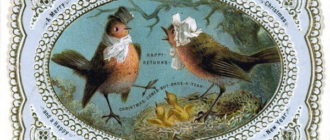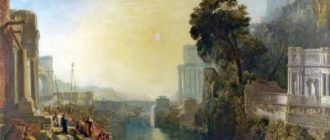
The paintings of the English artist Edmund Leighton, who wrote in the style of romanticism, can be called real “time machines”. They take the viewer back to ancient times. Moreover, they are so realistic, filled with details that they create the impression that you yourself are among the characters in the picture. Leighton was a sophisticated craftsman who created meticulously drawn paintings.
The same is the painting “Faded Laurels”, painted by Leighton in 1889.
Although the picture was painted at the end of the 19th century, it takes the viewer to the early Middle Ages.
In the clearing in front of the entrance to the castle there is a crowd that listens to a musician playing the harp.
He is young, and all the attention of the audience is riveted to him.
And in the foreground sits an elderly musician.

Once upon a time, he conquered the audience with his game. But his time has passed, and on his head he has only a wreath of withered laurel. Clothes are torn, shoes are worn out. His songs are no longer interesting to anyone.
The audience has new idols to whom they give all their attention.

Women are dressed in traditional medieval clothes.
The fair-haired lady in the foreground is dressed in a white tunic with narrow sleeves and a wide skirt. Undoubtedly, this lady is of the highest rank. This is evidenced by her belt, with false negligence tied at the bottom and emphasizing the shape of her hips. This is the highest “peep” of the fashion of that time.

Next to her is a girl with a belt tied around her waist. So basically they wore belts.
The hair of young girls is not covered. They are either braided or loose. Older ladies covered their heads with veils.
The men are typically dressed in the High Middle Ages. They mostly wear short tunics with beautifully decorated edges. Breeches or tights were held at the waist with a drawstring. The calves are tightly bound with ribbons that start from the boots and rise almost to the knees.
In the picture we see that both children and the elderly gathered to listen to the musician. The performance of traveling artists was one of the most popular entertainments in those days.






